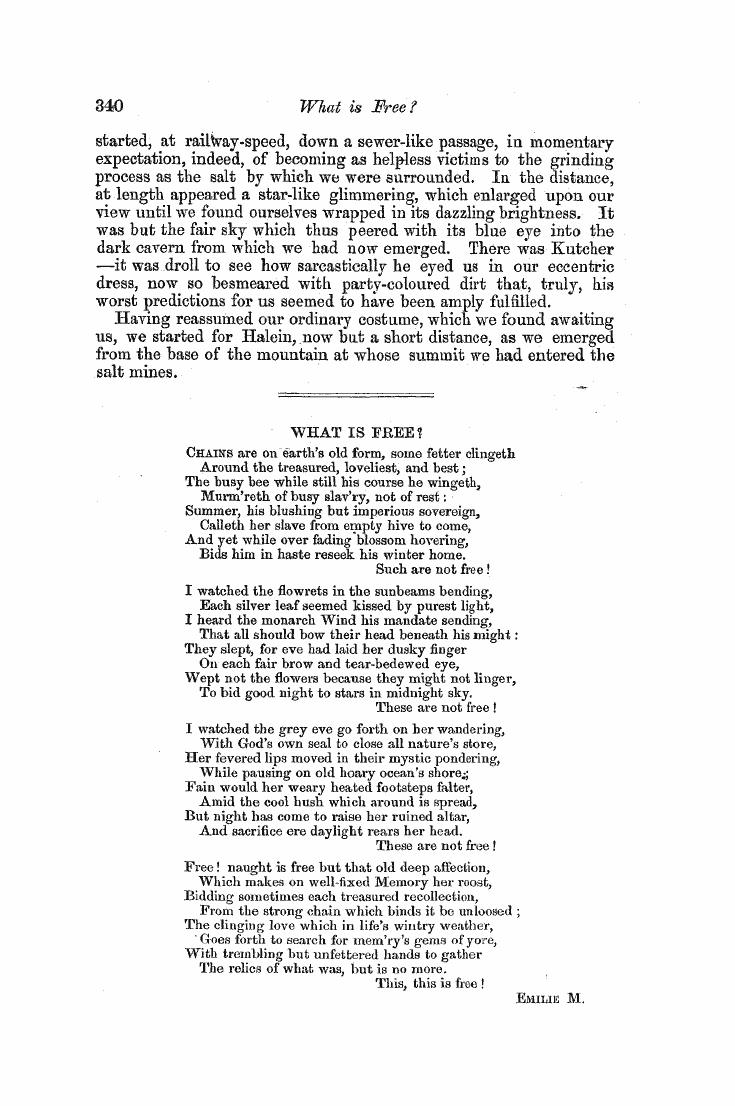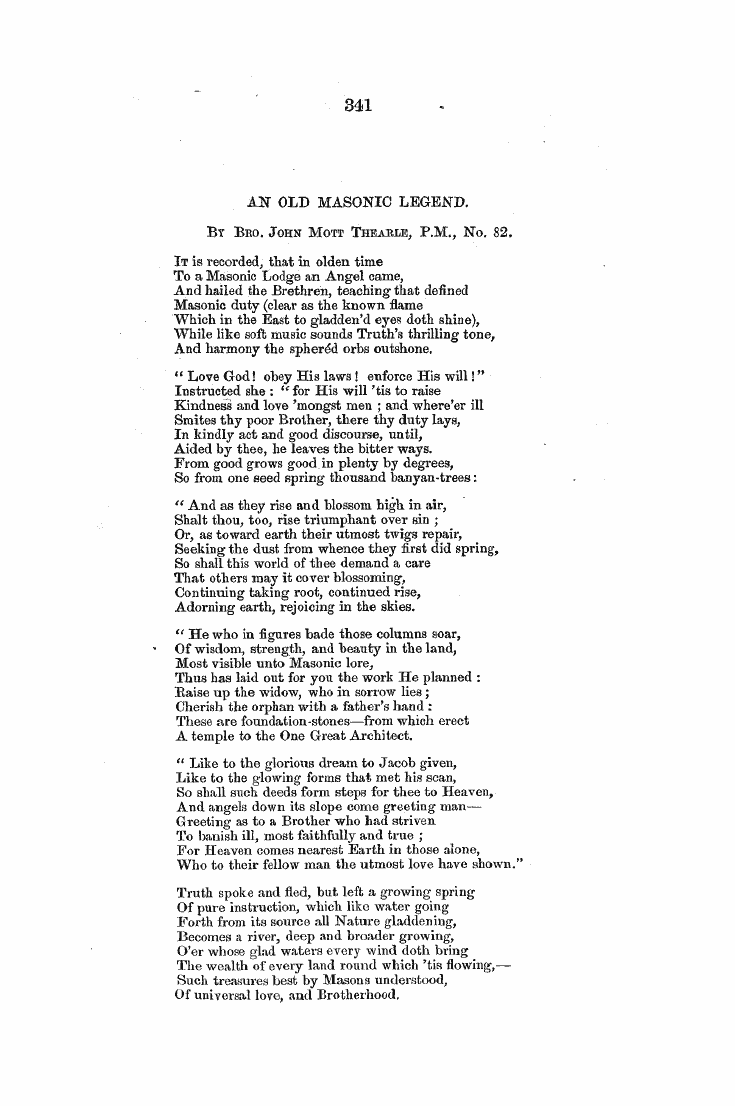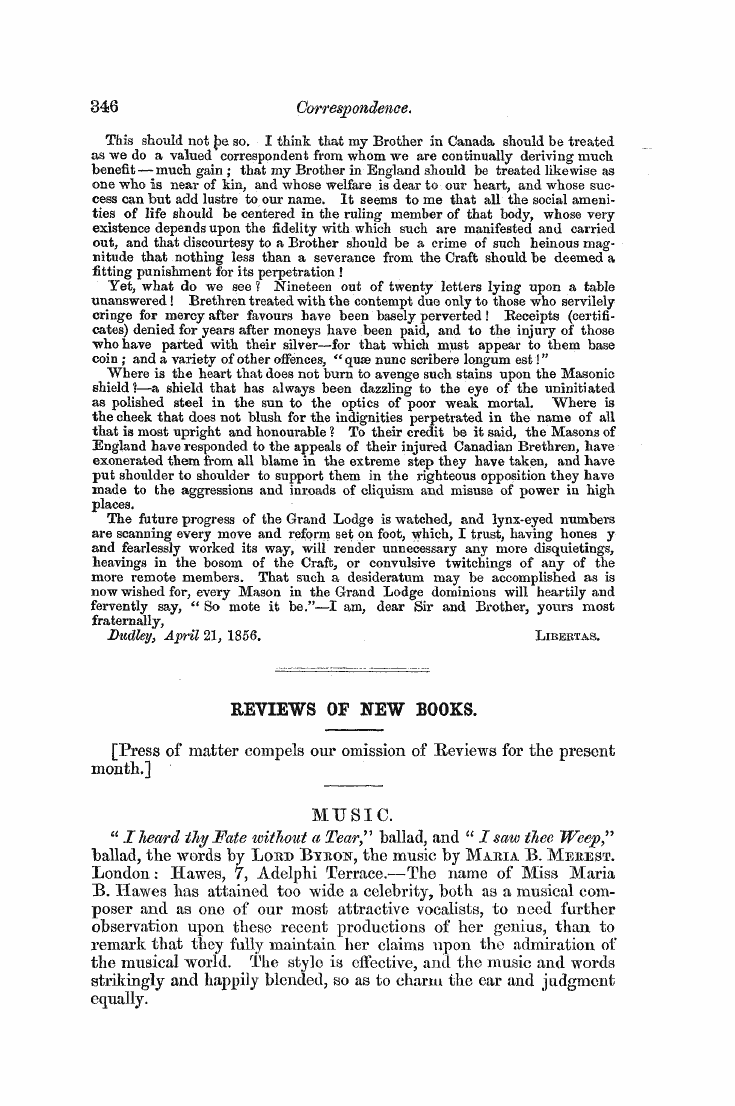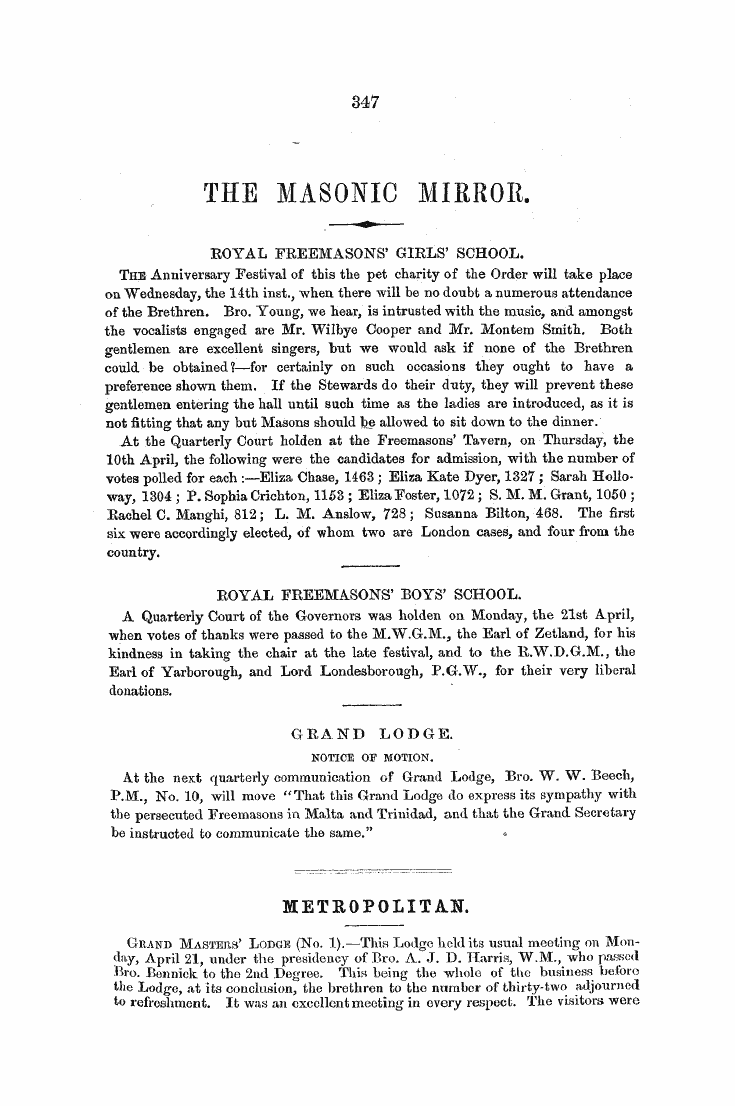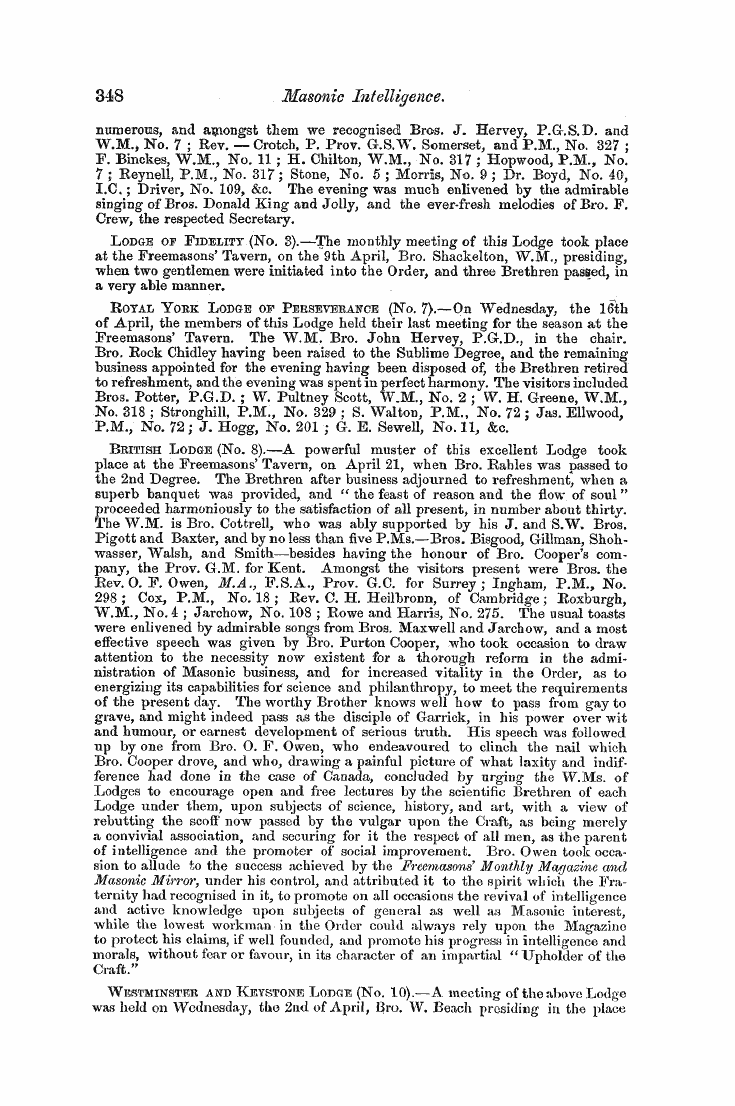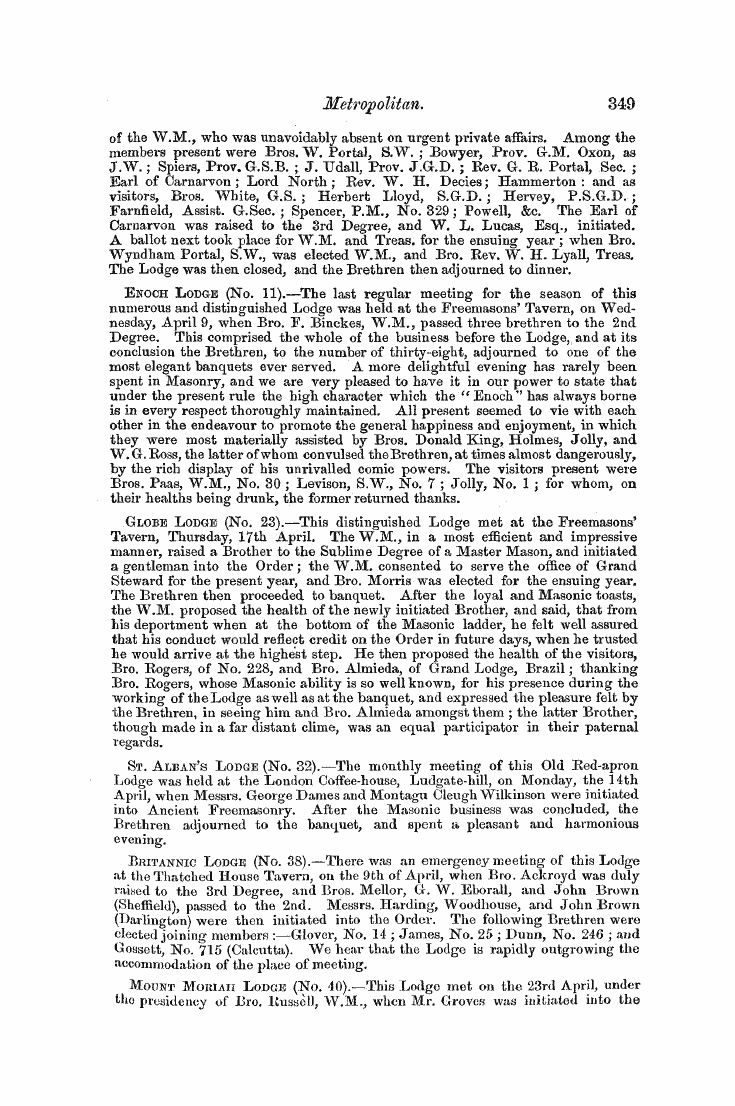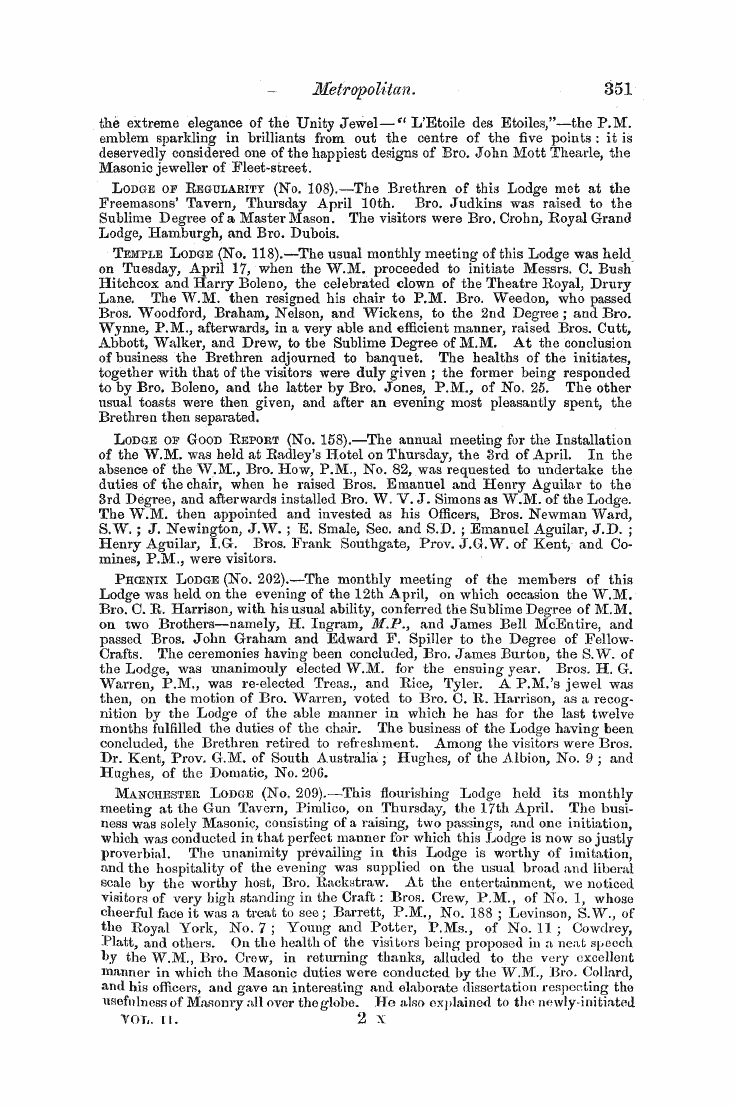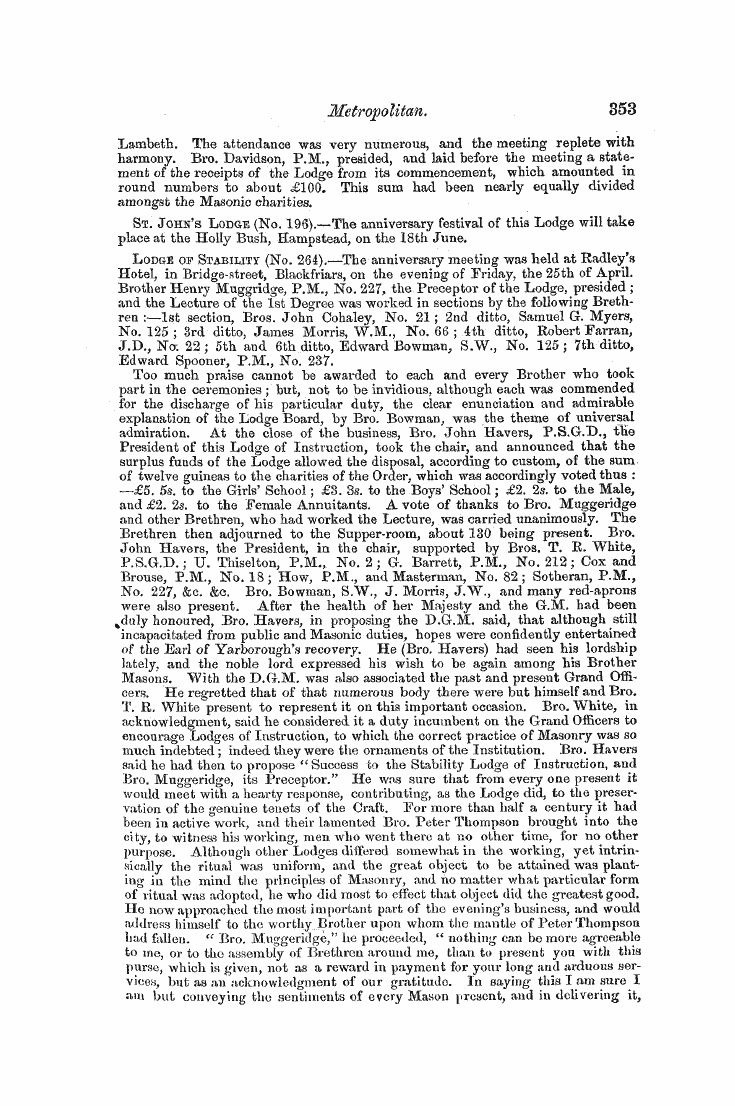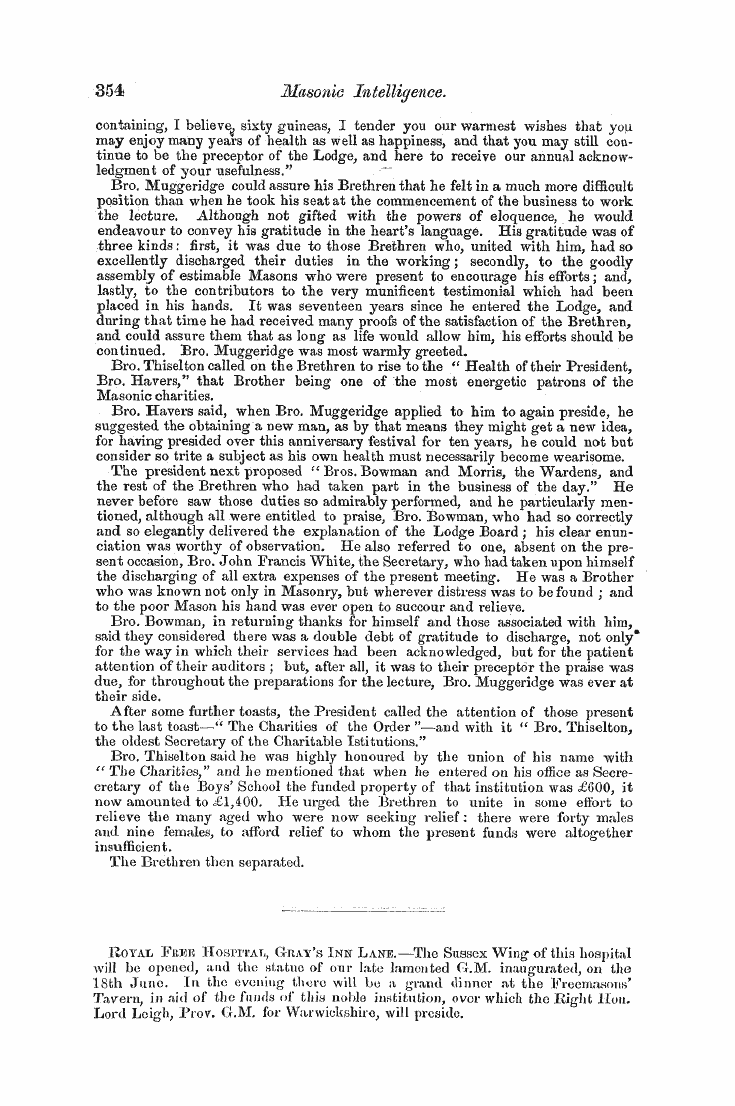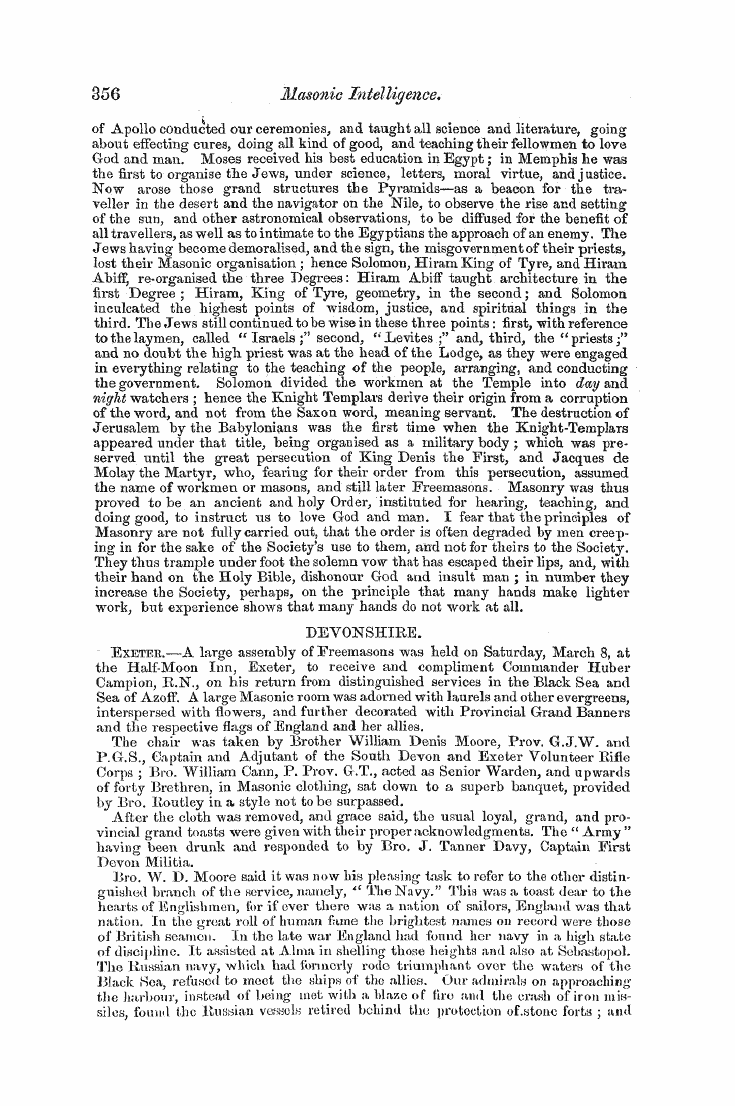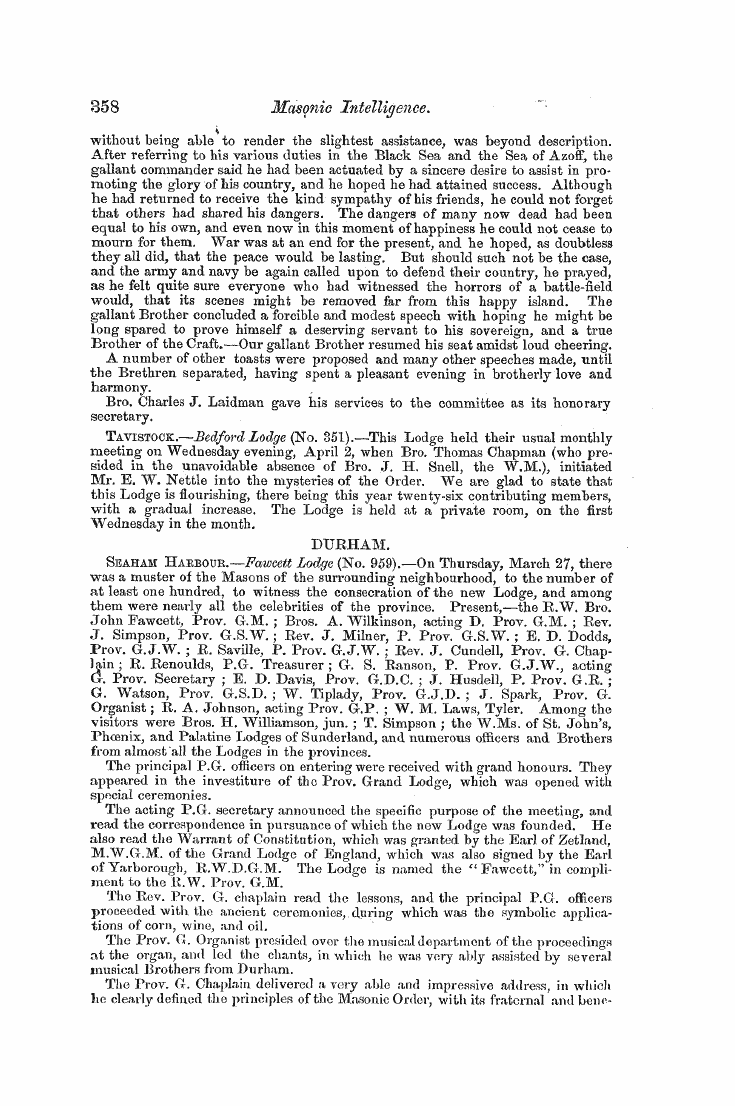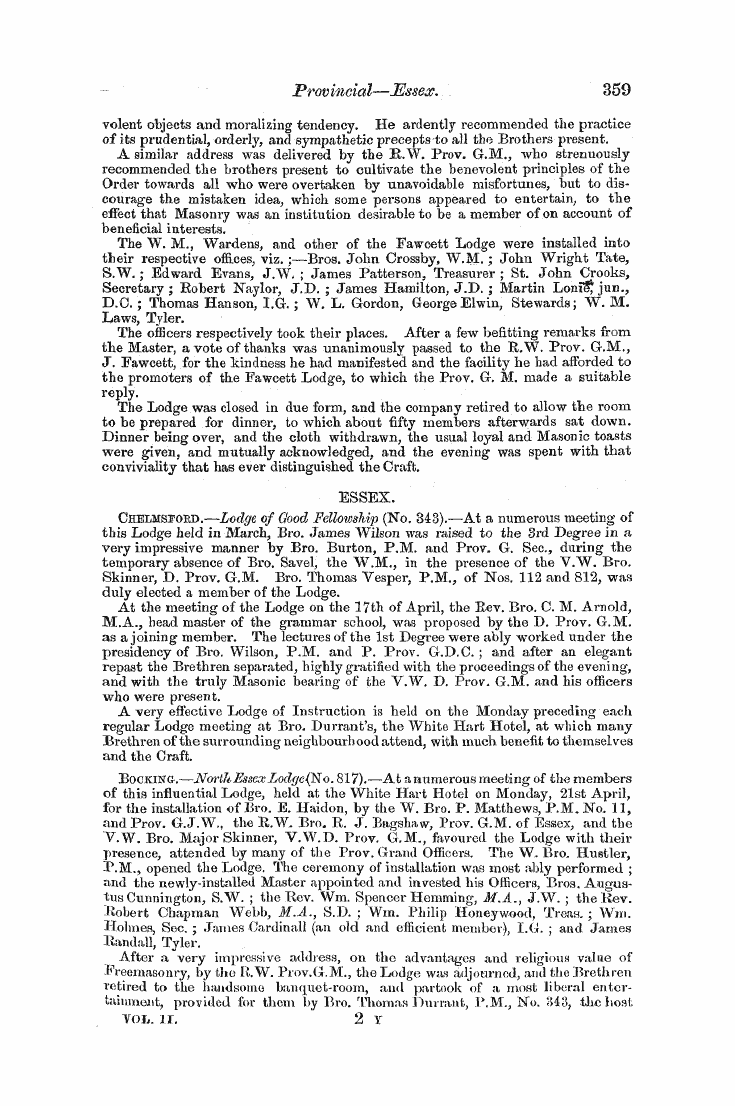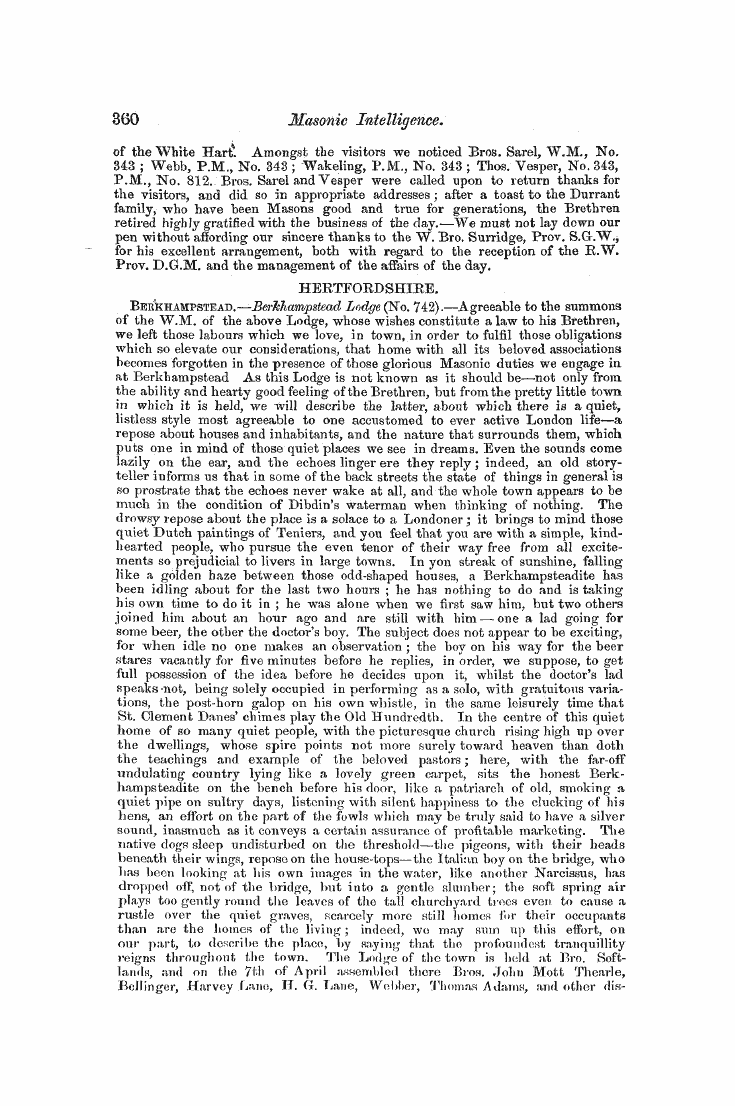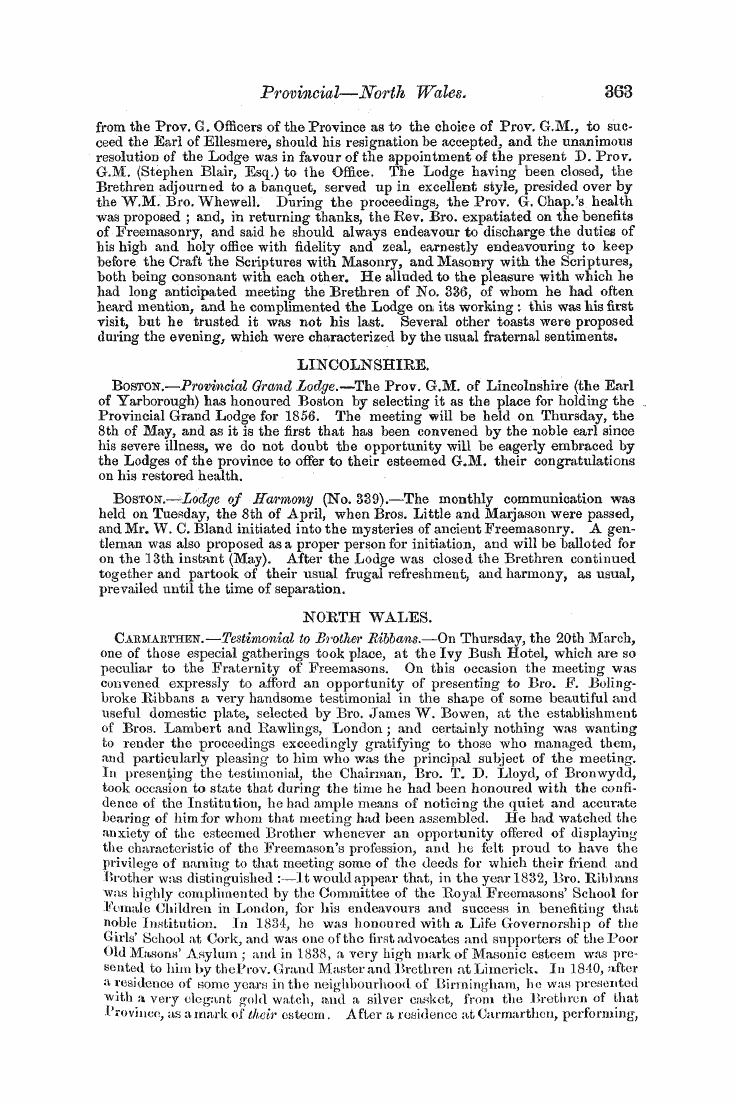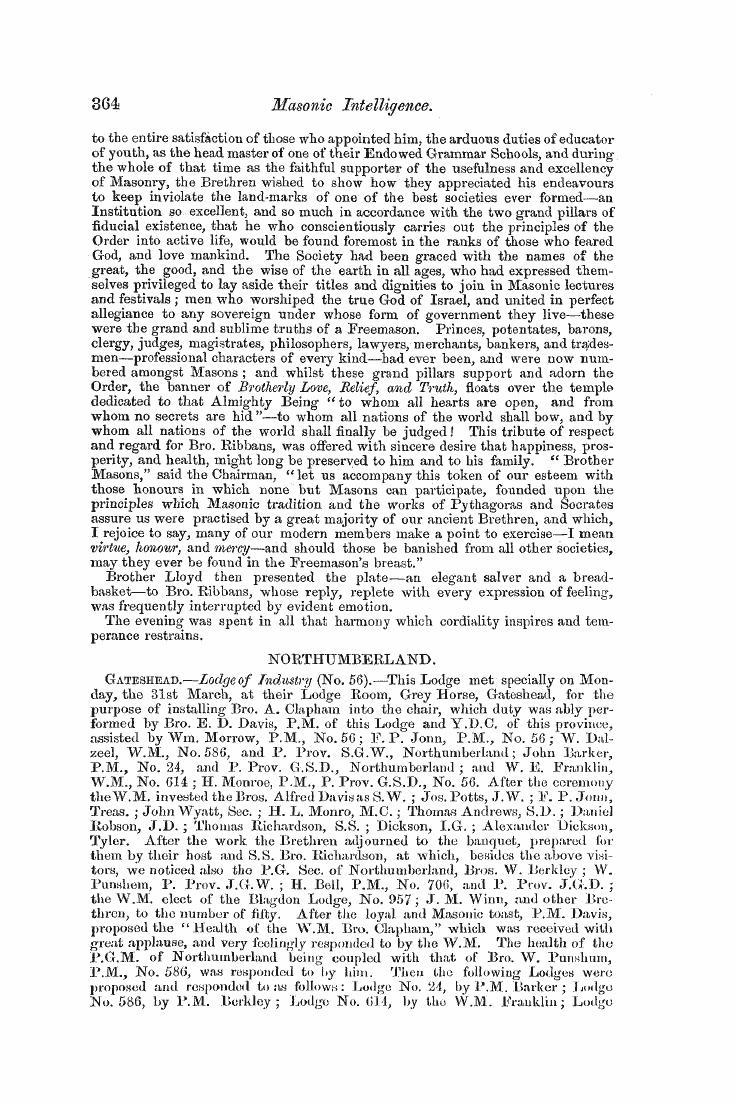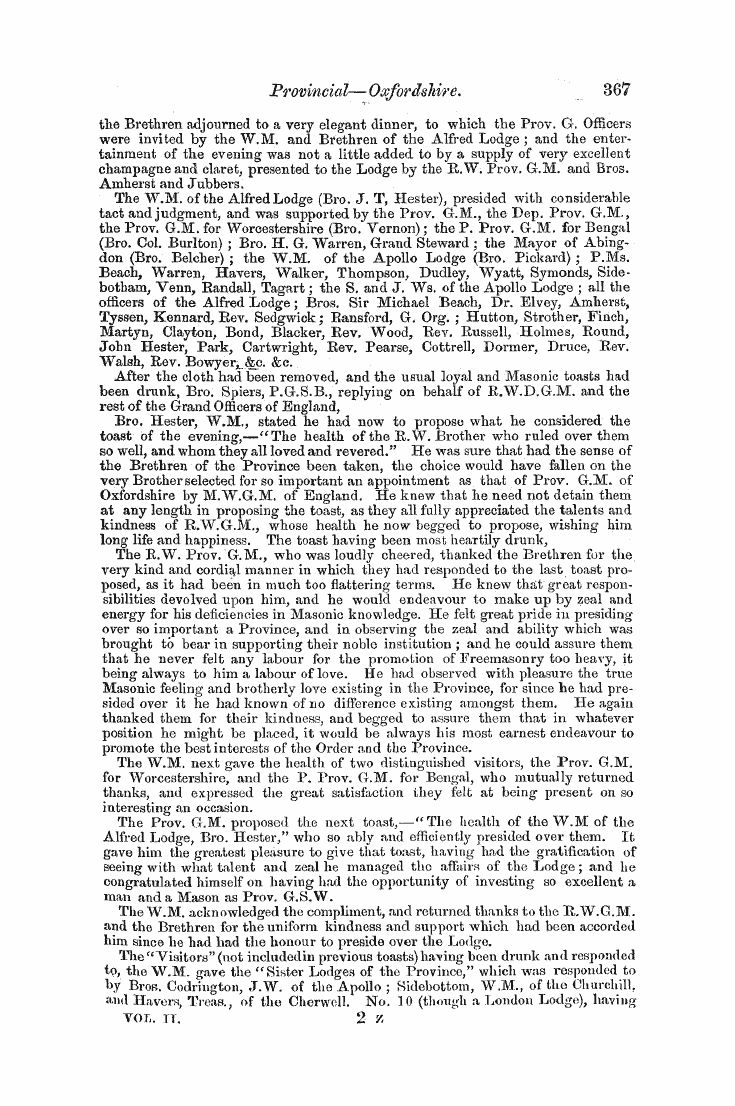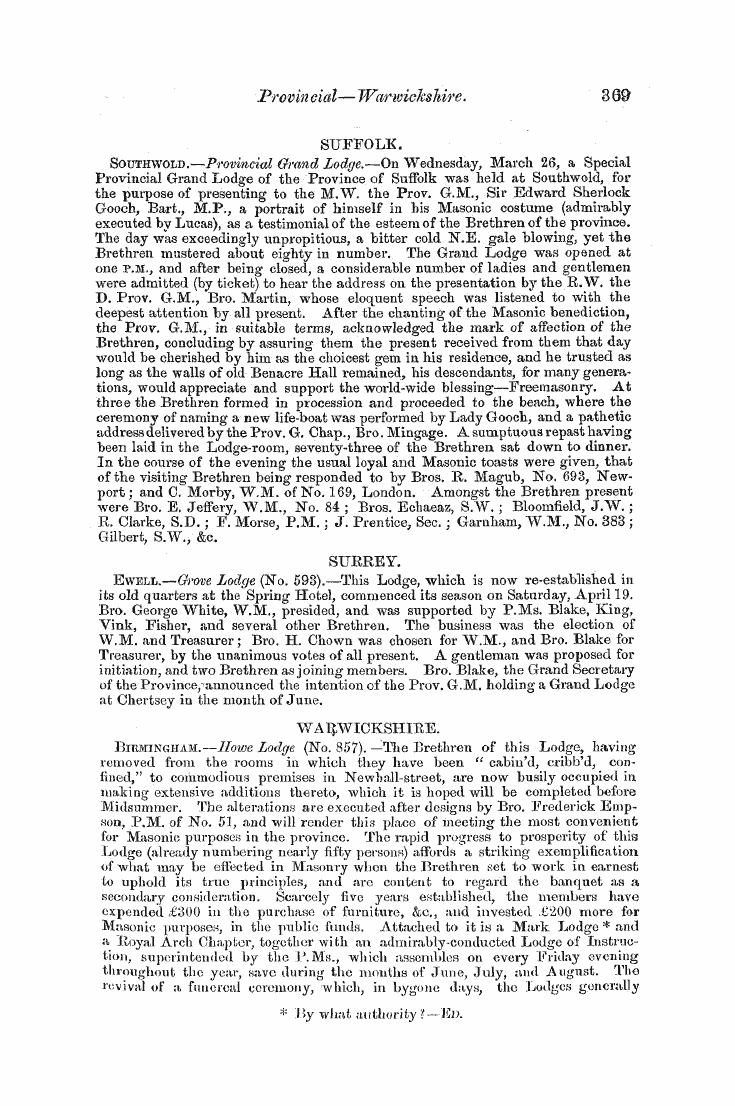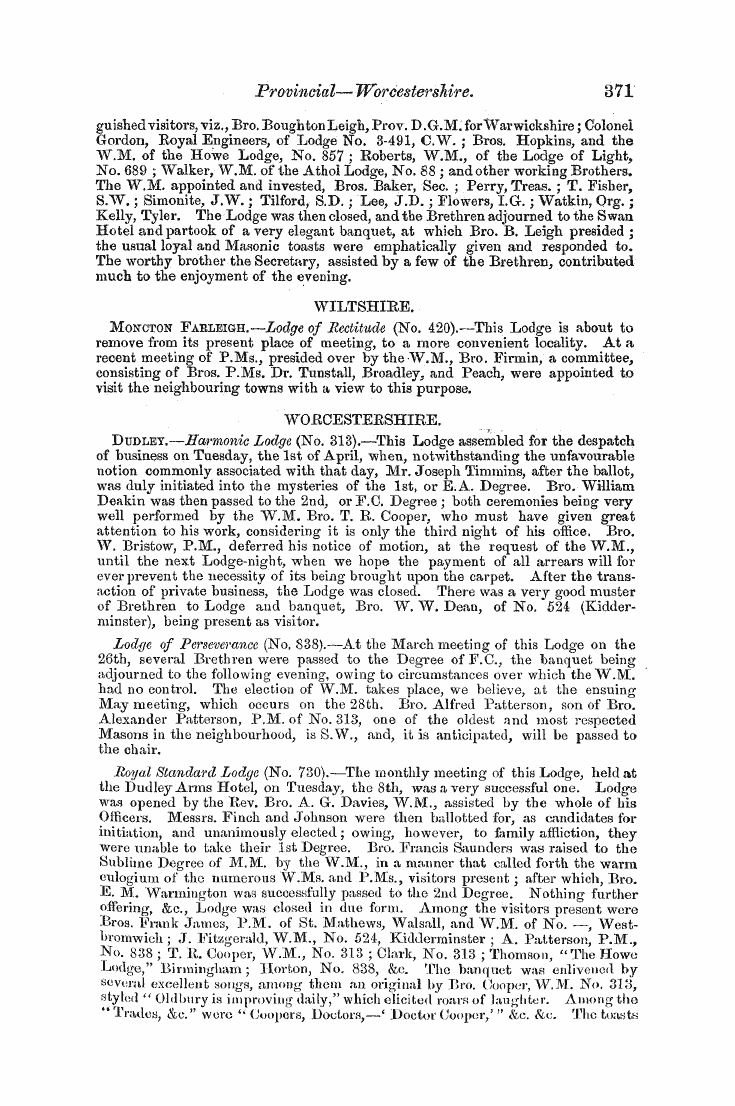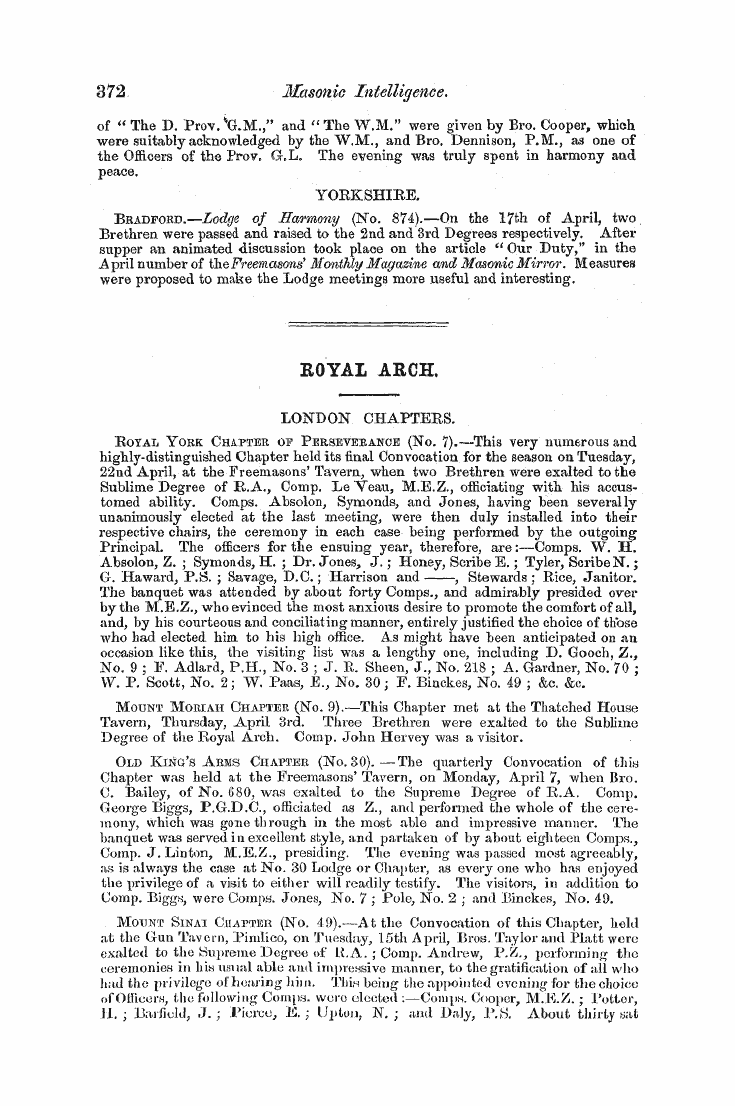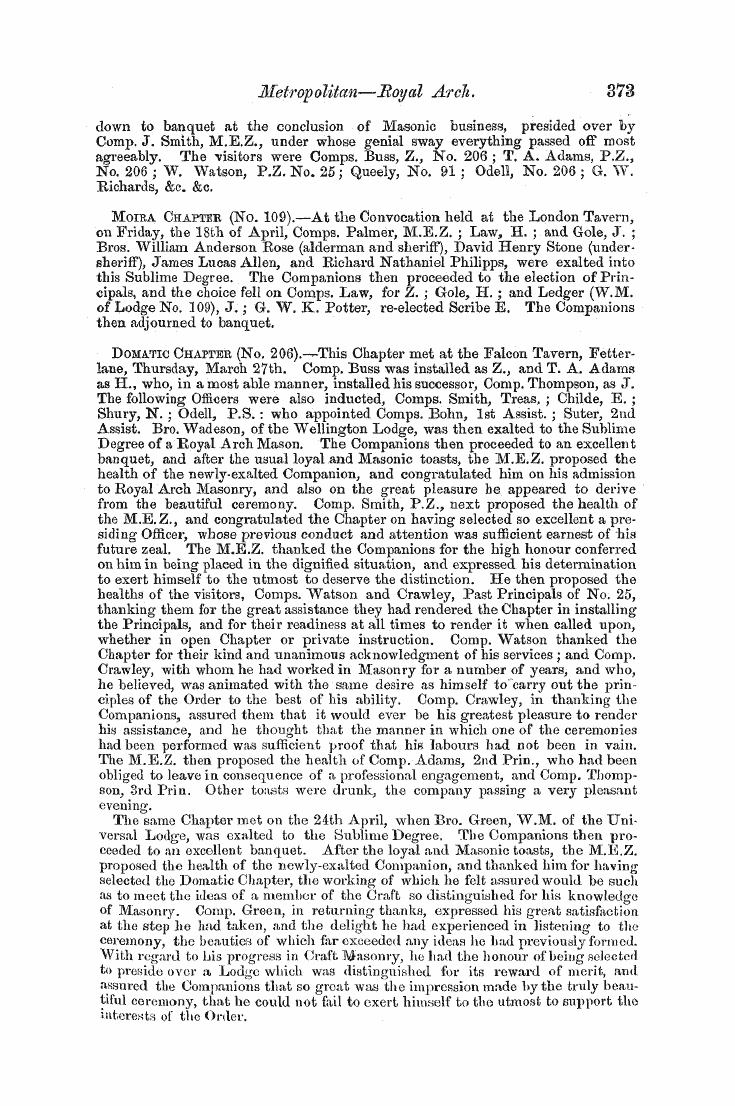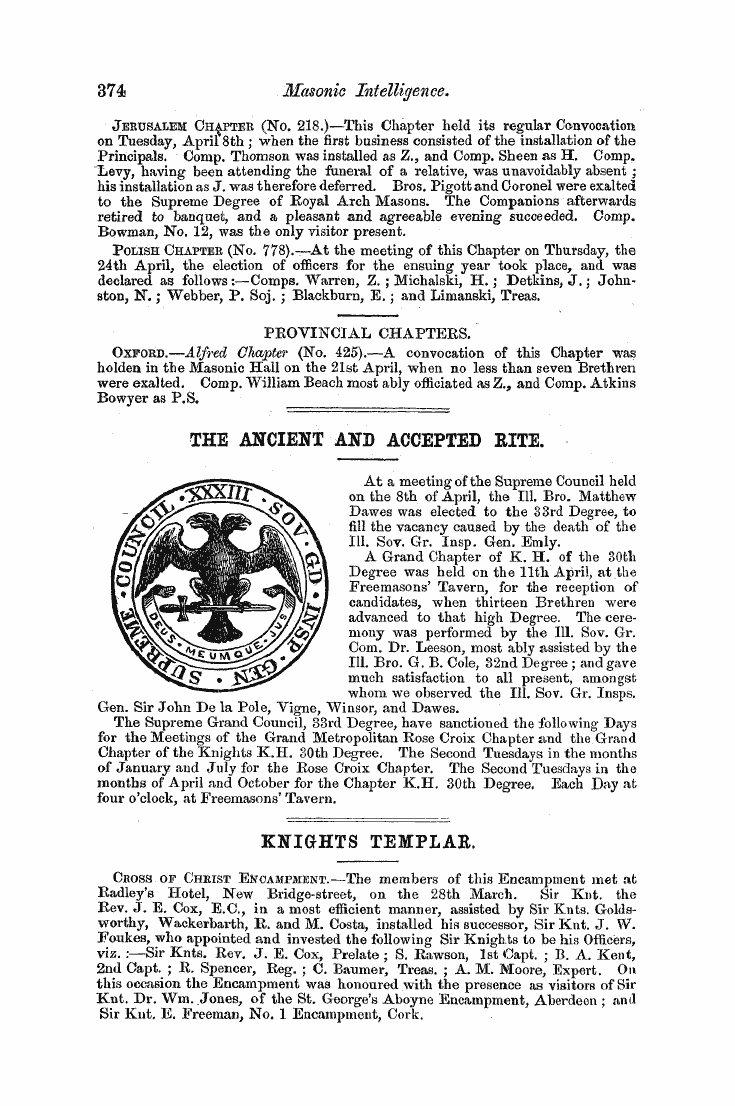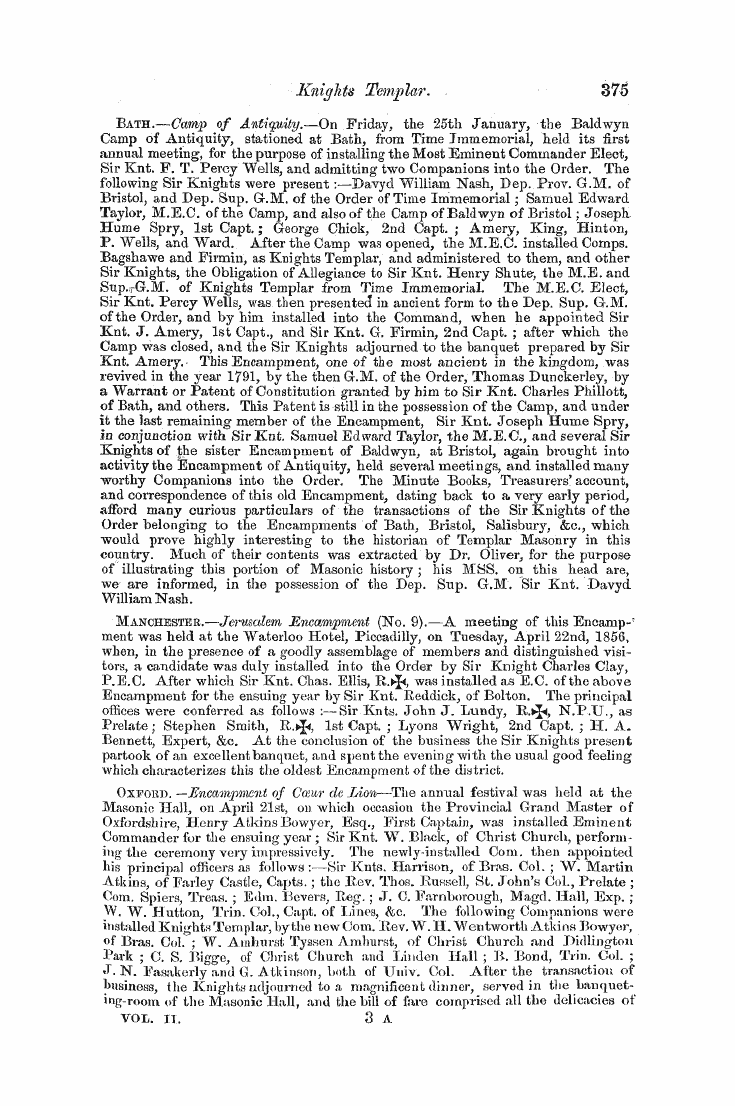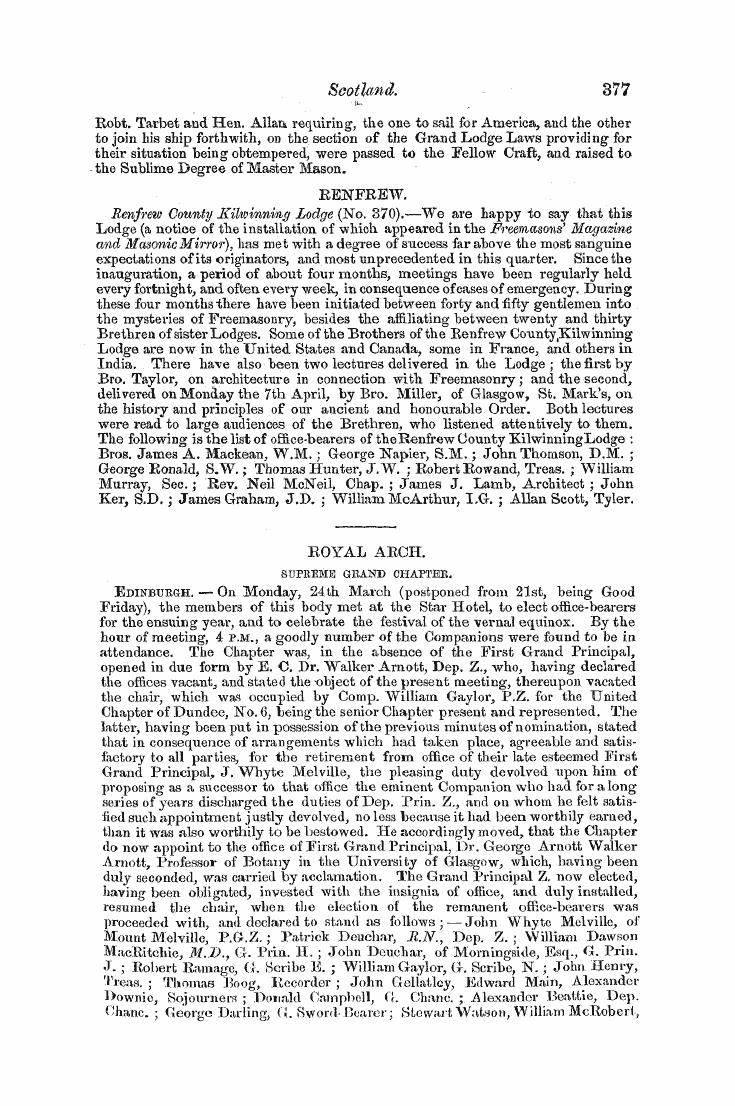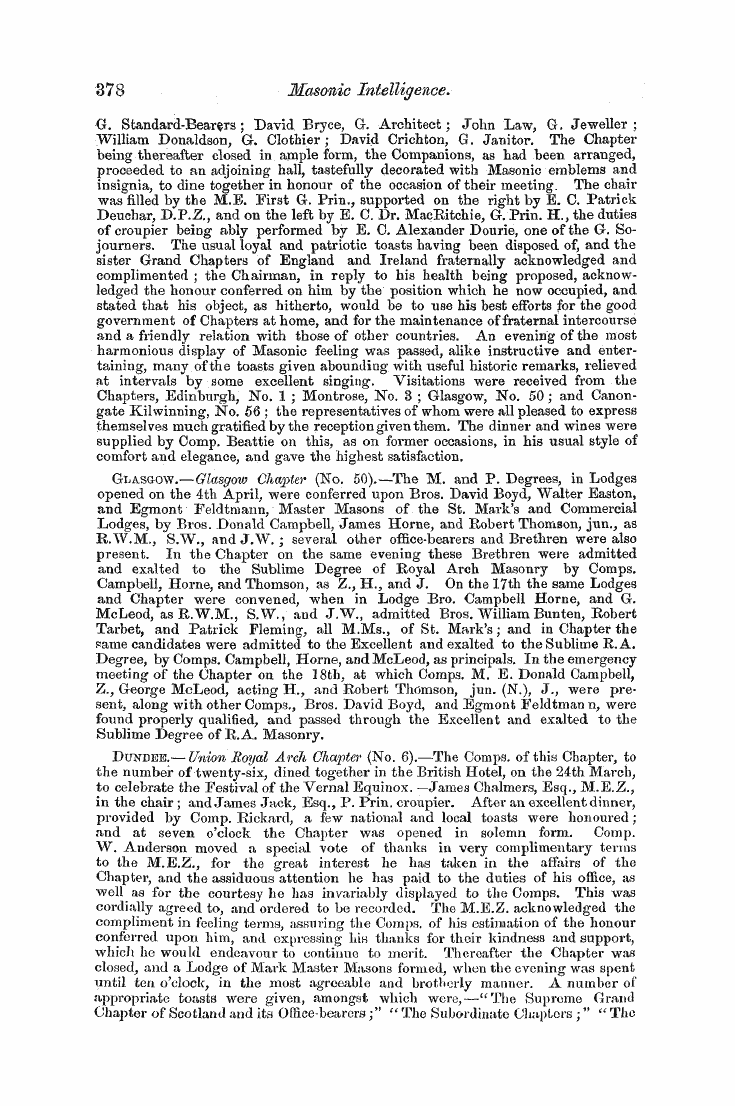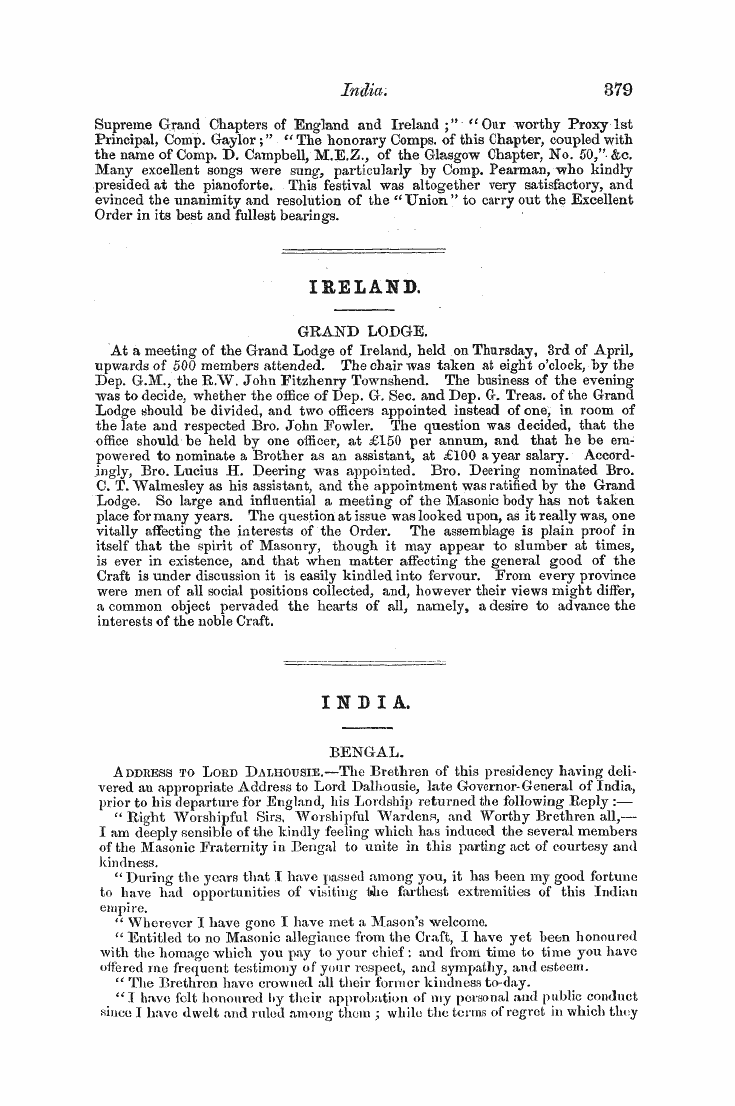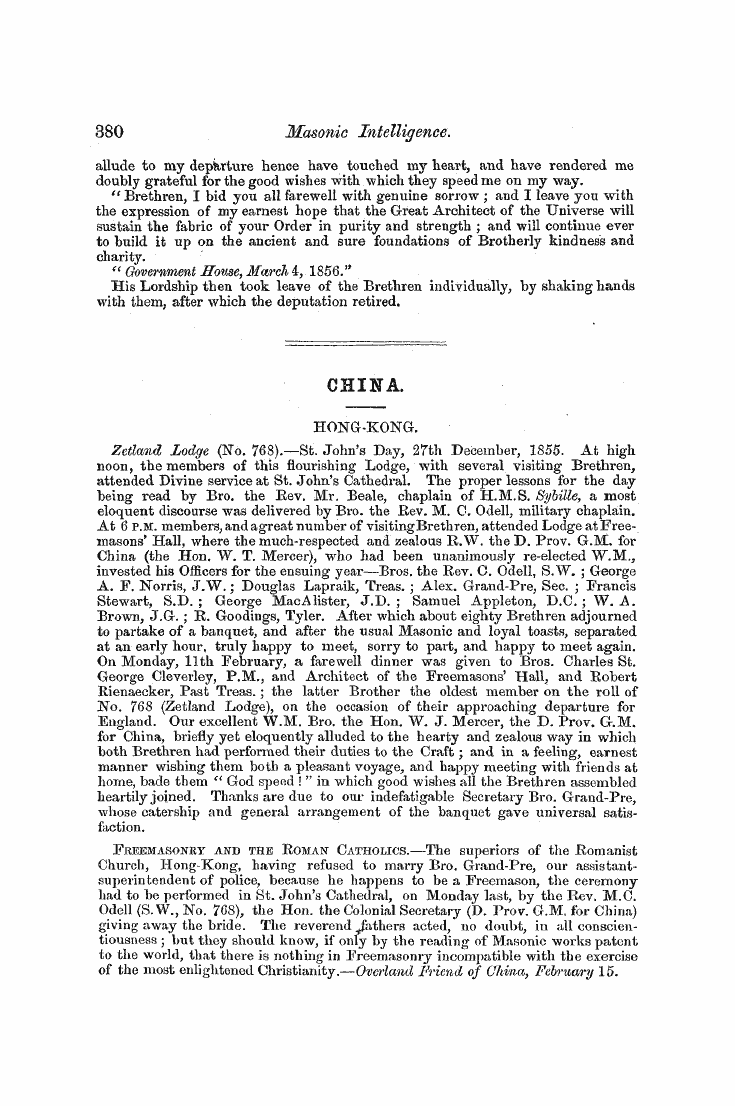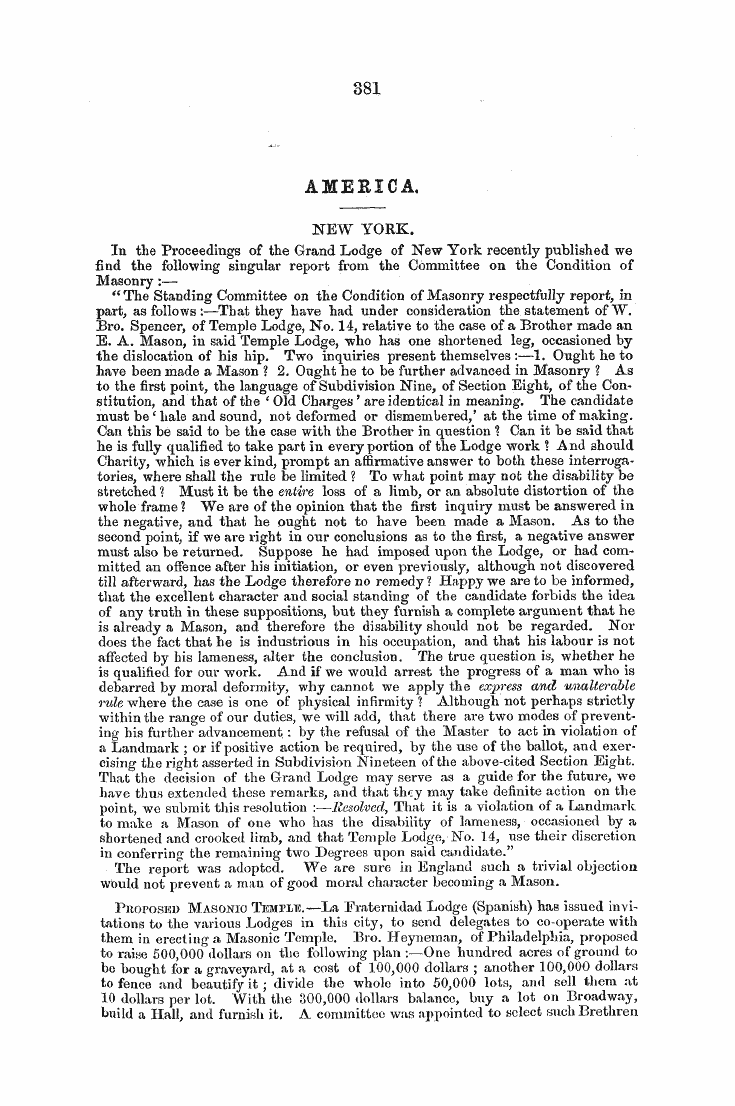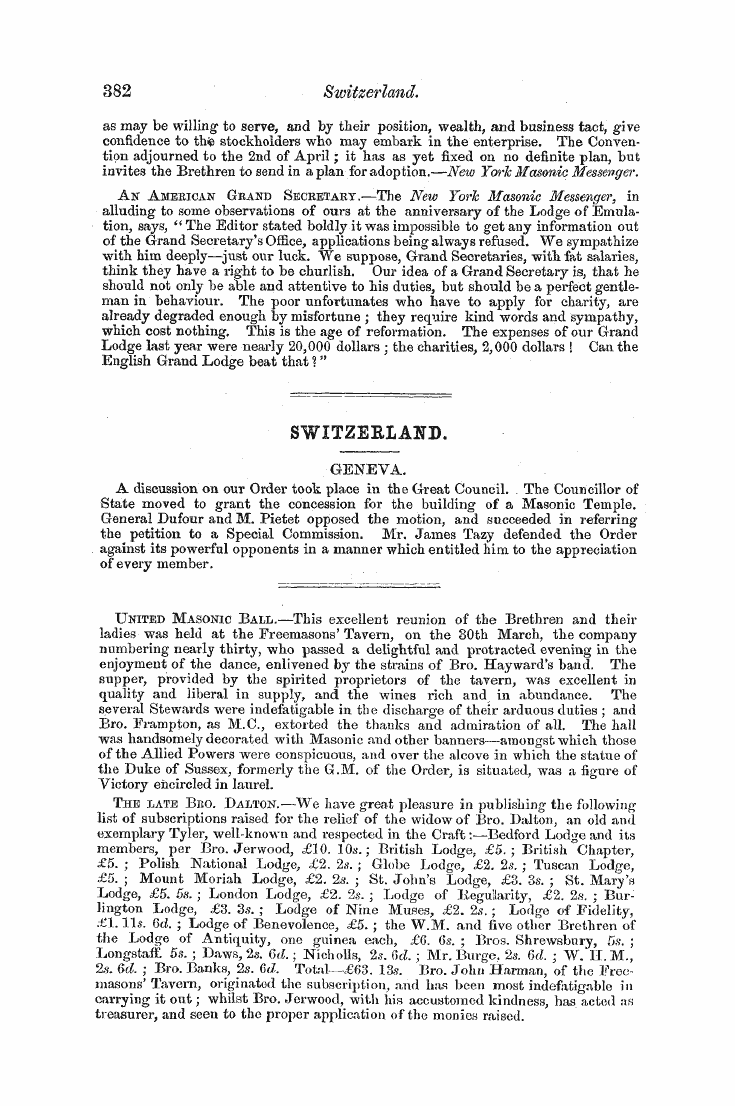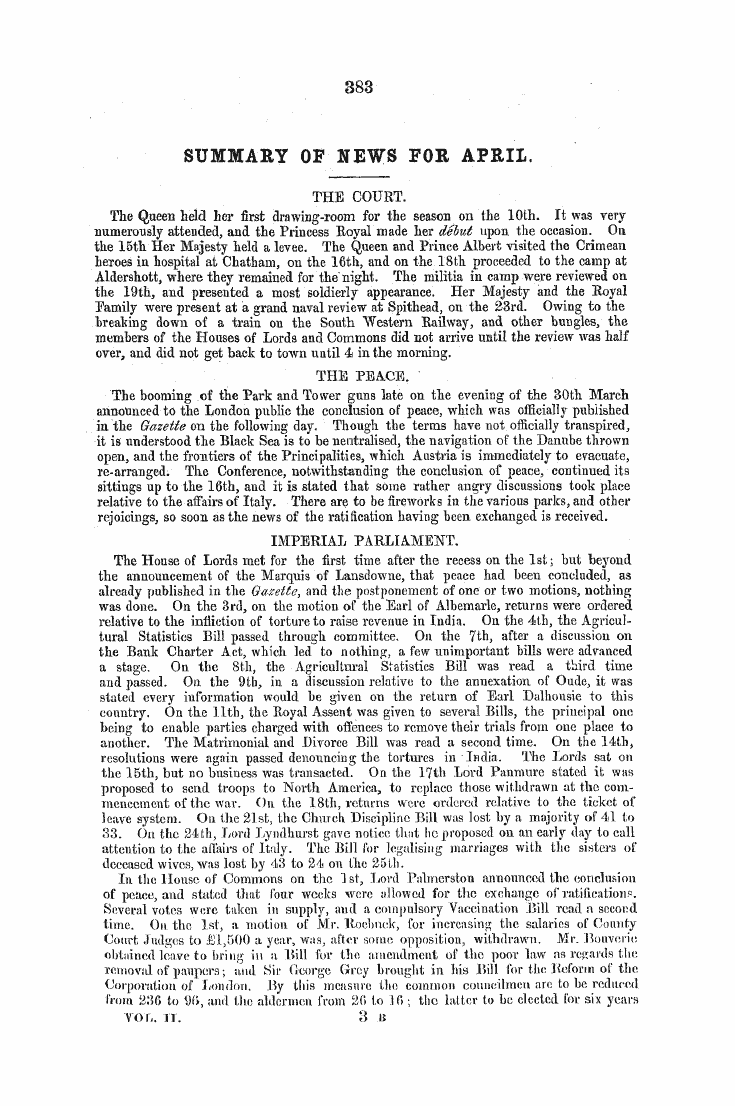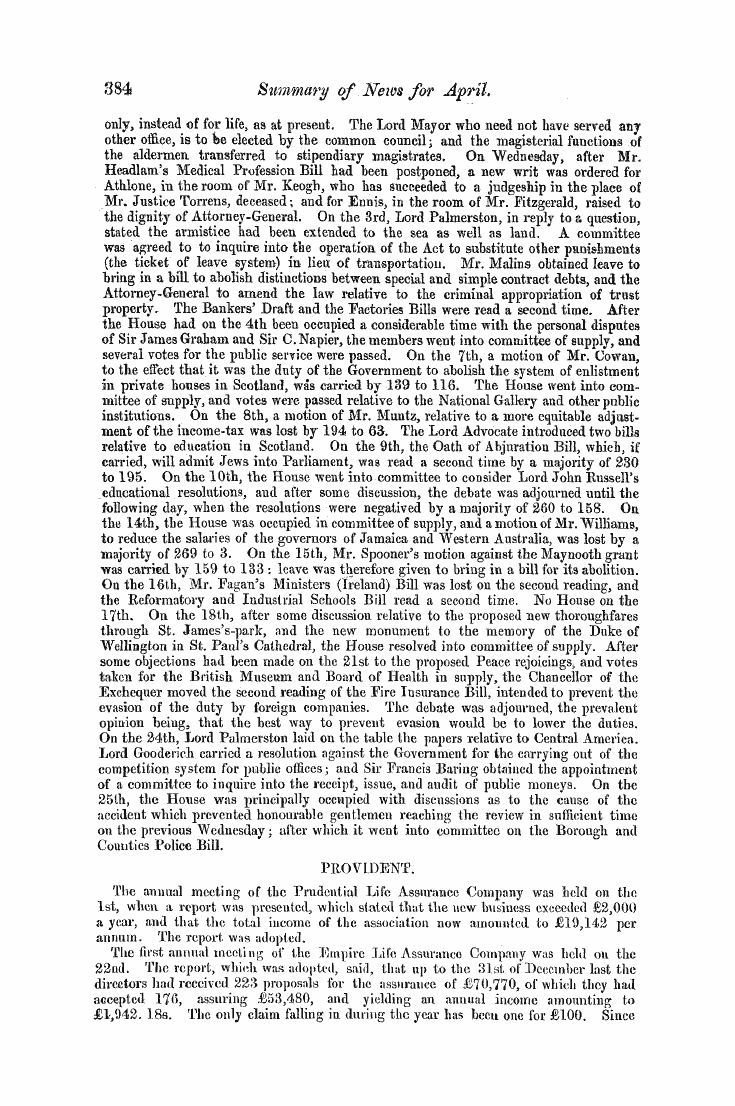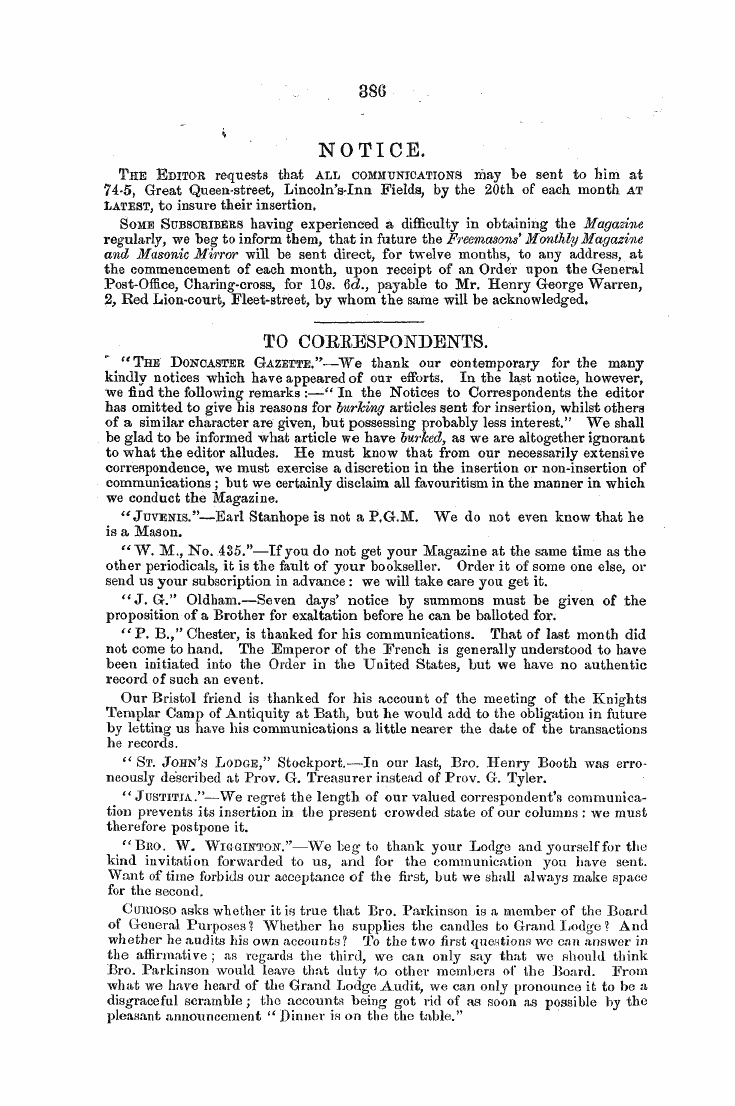-
Articles/Ads
Article Untitled Article ← Page 4 of 5 →
Note: This text has been automatically extracted via Optical Character Recognition (OCR) software.
Untitled Article
Among the offerings brought for the work of the Tabernacle , " bracelets and ear-rings and rings" ( Exod . xxxv . 22 ) are mentioned . Upon the very doubtful authority of this text , the origin of wearing wedding-rings has been derived , some say , from the Jews . This idea is controverted by Leo of Modena ; and though Selden allows that the Hebrews gave a ring in their marriage ceremony , he asserts that it was only as equivalent to a piece of money of the same value , which
it was the custom to give before . The same author cites Clemens Alexandrinus as a proof of the antiquity of the use of the ring in Christian marriages . " The ring , " he says ^ " is given her , not as an ornament , but as a seal , to signify the woman ' s duty in preserving the goods of her husband , because the care of the house belongs to her . "
In certain marriages in France , we learn from the antiquary De Breveil that it was anciently the custom for the bride to wear a rush ring . The same custom must have been prevalent in London in the days when one could not pass along Meet-street or Ludgate-hill without seeing notices in windows of " Weddings performed here , " and hearing " tenters" inquire , " Would you like to be married , sir ? " or , " Madam , do you want a parson ? I am the clerk , and
also the registrar of the Fleet . " Bichard , Bishop of Salisbury , forbade , in his " Constitutions , " 1217 , putting rush rings upon women ' s fingers , alleging that some persons were foolish enough to believe that this mock ceremonial was a real marriage .
Investiture with the ring and staff was formerly claimed by the Church . Upon the consecration of a bishop , as a token of the bridegroom ' s espousal of the Church , a gold ring was placed upon the middle finger of his right hand , with the following words : — " Accipe annulum discretionis et honoris , fidei signum ; ut quae signanda , signes ; et quae aperienda sunt , aperias ; quae liganda sunt ,
liges ; quae solvenda sunt , solvas ; " or , rendered into English , " Receive the ring of discretion and honour , a sign of faith ; that thou shouldest seal those things , which should be sealed ; and those things which are to be revealed , thou mayest disclose ; those things which are to be bound , thou mayest bind ; which are to be loosed , thou mayest loose . " This ceremony was introduced into England , A . n . 1050 , when Soearfoc . abbot of Abingdon , was elected to the vacant see of
London , and upon his rejection by King Edward the Confessor , William , a Norman , was consecrated . The following passage , which we extract from Collier ' s " Ecclesiastical History of Great Britain , " vol . i . p . 518 , bears upon this point . " Upon this occasion [ to which we have just referred ] , it may not
be improper to relate the complaint of Ingulphus . This historian , mentioning the death of Brictmer , abbot of Croyland , takes notice that the pastoral staff was immediately carried to London by the prior and two other monks , and delivered into the king ' s hands . From tue time of this prince ' s father , as he continues , the abbots began to be known at court , where those that were ambitious used to bribe the favourites to get themselves preferred . For the freedom of elccvol . n , 2 v
Note: This text has been automatically extracted via Optical Character Recognition (OCR) software.
Untitled Article
Among the offerings brought for the work of the Tabernacle , " bracelets and ear-rings and rings" ( Exod . xxxv . 22 ) are mentioned . Upon the very doubtful authority of this text , the origin of wearing wedding-rings has been derived , some say , from the Jews . This idea is controverted by Leo of Modena ; and though Selden allows that the Hebrews gave a ring in their marriage ceremony , he asserts that it was only as equivalent to a piece of money of the same value , which
it was the custom to give before . The same author cites Clemens Alexandrinus as a proof of the antiquity of the use of the ring in Christian marriages . " The ring , " he says ^ " is given her , not as an ornament , but as a seal , to signify the woman ' s duty in preserving the goods of her husband , because the care of the house belongs to her . "
In certain marriages in France , we learn from the antiquary De Breveil that it was anciently the custom for the bride to wear a rush ring . The same custom must have been prevalent in London in the days when one could not pass along Meet-street or Ludgate-hill without seeing notices in windows of " Weddings performed here , " and hearing " tenters" inquire , " Would you like to be married , sir ? " or , " Madam , do you want a parson ? I am the clerk , and
also the registrar of the Fleet . " Bichard , Bishop of Salisbury , forbade , in his " Constitutions , " 1217 , putting rush rings upon women ' s fingers , alleging that some persons were foolish enough to believe that this mock ceremonial was a real marriage .
Investiture with the ring and staff was formerly claimed by the Church . Upon the consecration of a bishop , as a token of the bridegroom ' s espousal of the Church , a gold ring was placed upon the middle finger of his right hand , with the following words : — " Accipe annulum discretionis et honoris , fidei signum ; ut quae signanda , signes ; et quae aperienda sunt , aperias ; quae liganda sunt ,
liges ; quae solvenda sunt , solvas ; " or , rendered into English , " Receive the ring of discretion and honour , a sign of faith ; that thou shouldest seal those things , which should be sealed ; and those things which are to be revealed , thou mayest disclose ; those things which are to be bound , thou mayest bind ; which are to be loosed , thou mayest loose . " This ceremony was introduced into England , A . n . 1050 , when Soearfoc . abbot of Abingdon , was elected to the vacant see of
London , and upon his rejection by King Edward the Confessor , William , a Norman , was consecrated . The following passage , which we extract from Collier ' s " Ecclesiastical History of Great Britain , " vol . i . p . 518 , bears upon this point . " Upon this occasion [ to which we have just referred ] , it may not
be improper to relate the complaint of Ingulphus . This historian , mentioning the death of Brictmer , abbot of Croyland , takes notice that the pastoral staff was immediately carried to London by the prior and two other monks , and delivered into the king ' s hands . From tue time of this prince ' s father , as he continues , the abbots began to be known at court , where those that were ambitious used to bribe the favourites to get themselves preferred . For the freedom of elccvol . n , 2 v





















